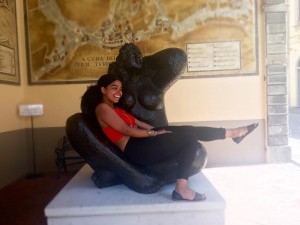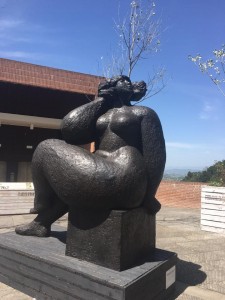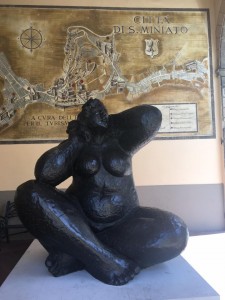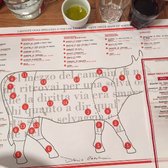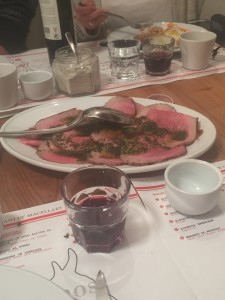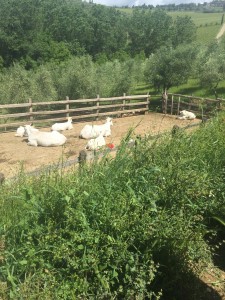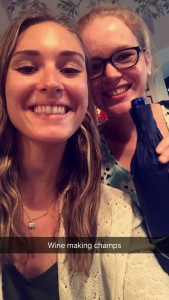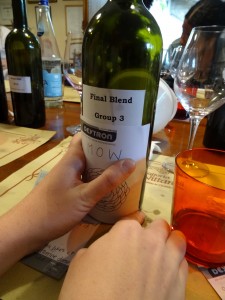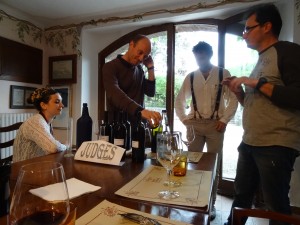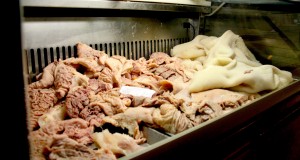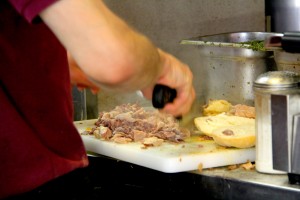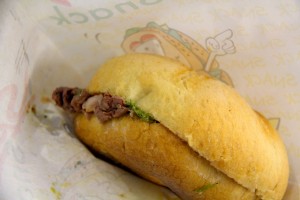The Artisans Behind the Vision
June 17th, 2016 by kalena19Katherine Lenahan
Professor Borghini & Professor MacDonald
17 June 2016
Introduction:
Throughout our time here, we have learned about food production in a unique way. From the process that ingredients go through to the way in which we taste these products and deconstruct them with our tastebuds, food and wine are more complex than I ever imagined. In order to understand how to deconstruct the components of each artist’s creation. I met multiple artists with each stop that we made, and learned about their method to their art, including the craftsmanship that is apart of each of their pieces. When we met with wine producers and butchers such as Dario and Vicky, we met artists that truly shape their products that reflects their innate creativity that yields an irreplaceable experience with each meal or bottle of wine that is created. Speaking with these artists in and around Panzano was a great experience and understanding their methods was essential, however with each artist that we met, we truly did not have the opportunity to understand the artists that remain behind the faces of the main artists such as Dario or Vicky. Dario and Vicky may be the heads of their projects, but they are not the rest of the body; they are not the hands that pick all of the grapes, feed all of the cows, trim the vines, and cut all of the meat. My objective in this paper is to capture the viewpoint of the layers of artists that reside behind the heads of these studios and correct the disconnect that we have with them in order to fully understand the importance of multiple aspects of the artwork that we experienced.
What is an artist?
An artist is an individual or a group of individuals who can convey their inner thoughts and emotions through a medium that an audience can interpret, and this interpretation can be through our senses or through our emotions. Telfer and I clash in regard to categorizing art; she feels that a “work of art” is something that its creator wanted it to be looked at “with intensity, for its own sake.” Telfer continues to expand upon this argument, but her ideas also encompass the concept that we cannot have an aesthetic reaction to taste or smell. Her definition directly clashes with mine because I feel that after experiencing extensive wine tastings and food samplings that I am moved in a way that a painting or a sculpture cannot capture. Taking her definition, it is essential to see that when we are served wine for example, we taste wine with an intensity that is unmatched with any other beverage that I consume to the point where I take notes about the wine just as some take notes about art that they view in a museum or gallery. Food is a major art that infiltrates my senses and emotions in a way that is unlike any other form of art. Telfer also argues that food is not a major art because we destroy upon consumption, however we criticize art when we visually and emotionally interpret it. In both cases we are “destroying” the art that is either hanging on the wall or on the table before us. Dario has captured the definition of an artist and this is evident from his restaurants which are his galleries atmosphere that he creates for individuals to interpret his work. Therefore it is evident that his dishes are considered major works of art. Through the definition that I provided above, the love, respect and savory flavors that are present in his work reflect the definition of an artist and are evident in each bite. We can better understand my interpretation through two cases, Dario Cecchini & Vicky Schmitt.
Dario the Sculptor, the Waiters the Chisels:
Dario is the master butcher, genius, and moderator of his butcher shop, but his genius shines with the layers of artisans that work for him. Their feelings toward this process reflect the overall product. The servers feel as if they are apart of a family and create an experience that is a form of art. This perspective is essential to understand because their contribution in their everyday work is an extension of Dario’s vision and without feeling this way towards his vision, we as interpreters of this art would not connect to a man who’s personality is overpowering and who’s meat would be seen as merely “special.” They are indispensable because they convey Dario’s message through their art of serving. Even though Dario’s genius is admirable, Dario can be an intimidating figure to approach, and the artisans behind his vision create an environment that aides the viewer in dissecting the art that they receive from Dario’s. These two entities are interconnected in such a way that truly makes this process an art form. Borghini explains how dishes and recipes are different but connected in the sense that “a dish is the stuff and the recipe is the idea,”; just as Dario’s artisans are the “dish” that contribute to the recipe, which is his vision. Borghini’s explanation of the importance of this phenomena is essential to consider in order to fully understand Dario’s craft. The combination of the art of service and the vision that Dario produces is not only beautiful cuts of meat but also a complex relationship with animals, that makes his work true art because we can consume it with our senses as well as just through vision and interpret its meaning. This significance and emotional complexities that exist in the ethical dilemma that we have as meat eaters makes us feel in some ways as if we are truly appreciating the creation that nature provides. This process is unmatched by any other medium that Telfer may try to argue because it is an organic experience that encapsulates so many emotional responses that we do not quite understand what we have experienced until after the meal. Dario’s work is a major art that cannot convey its true meaning to its audience without the layers of artisans behind his vision that truly convey the experience of joy and understanding of the creation.
Vicky at Le Fonti & Social Structure:
Vicky is another artist who has artisans behind her vision to better shape the taste that she encapsulates into her wine. Le Fonti’s workers encompass a multitude of backgrounds that influence the wine. The artisans are comprised of both Italians who chose to work in the fields as a vocation as well as the Eastern European immigrants who fled violence in their home countries of Albania and Kosovo. Vicky explained that they are all hard workers who enjoy their work in the fields and strive to pick only the best grapes for the winery. They enjoy their work because of the healthy and respectful relationship that Vicky has with the growers, which yields a more fruitful result. These workers are a part of the exception to the food system because they are not fiscally valued as a form of labor and their methods are not standardized which means that Vicky is willing to pay for more hours from them if there are slower field workers during the harvest time; it is not solely about quantity, but quality. The environment specifically at Le Fonti is dissimilar from the food system because the process to create wine is not as industrial as other larger wineries, as a result, the workers are treated better. Sandler provides a profile of workers that includes characteristics of immigrants and their risk of deportation, however, Vicky articulated that many of her workers who are Albanian or of Eastern European descent are so grateful to have an opportunity that supports a new life for them. The Italian workers are continuing an art that represents the region and is an art that is critical to generating quality in the product. This critical because the quality is something that we can smell, see, and taste and from our senses and detect flavors that vary from berries to vanilla and others that connect emotions and memories, making the tasting a powerful experience. This art is generated through a thoughtful harvest process; some artists creating other art forms convey suffering while others convey love, joy, or remnants of their culture through their process. In this case, the Eastern European field workers pick grapes knowing that the grapes represent freedom, and infuse this feeling into their work. This is why a bottle of wine is more emotional than we actually realize; when we consume it, we are not only tasting our memories, our thoughts, and our feelings, but we are tasting with it the artists’ aspirations and emotions as well.This is more powerful than Telfer’s examples of visual art because we are interpreting the wine that we consume in a communal way that is not present at a gallery.
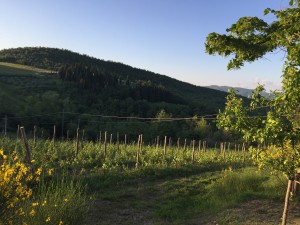
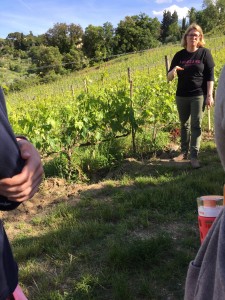
Conclusion:
The artists that we met with are essential to representing this region and to generating paths to food resources that are ethical and delicious. The flavors that they pass to us connect us to memories and emotions in a way unlike any painting. Additionally, when we consume these products we are able to the emotions and sentiments that the artisans wanted to convey in a way that speaks to our own feelings and ideas. With out the artisans behind Dario and Vicky, their visions would be very different realities.

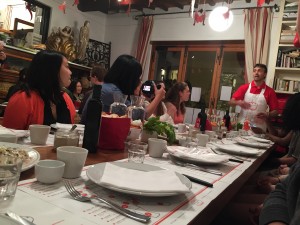
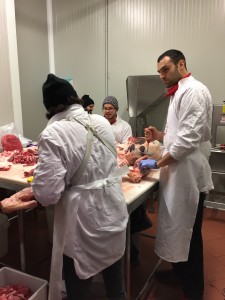
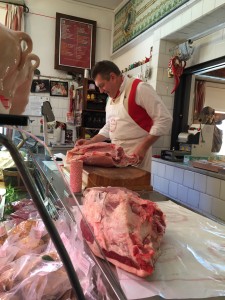
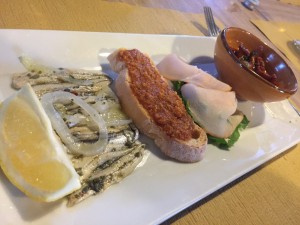
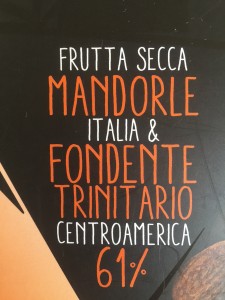
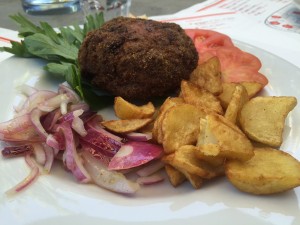
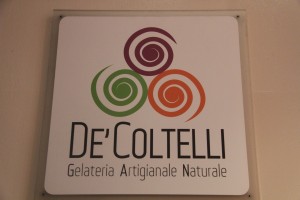
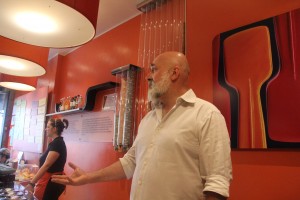
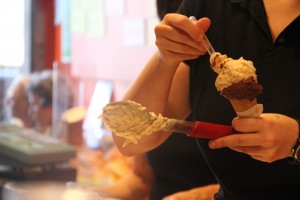
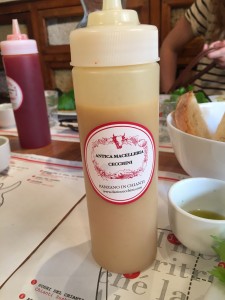
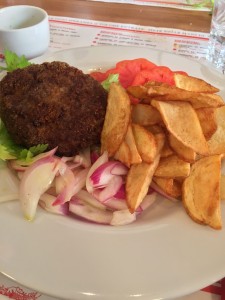
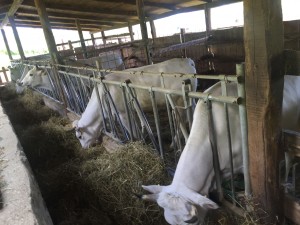
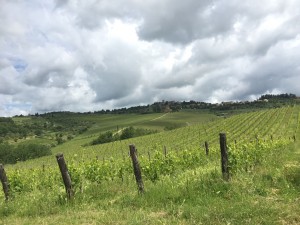
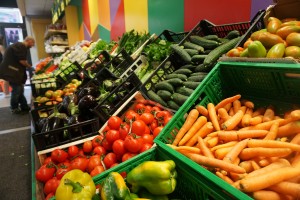 h is gradually making cooking an industrial process even on a small level.
h is gradually making cooking an industrial process even on a small level.
